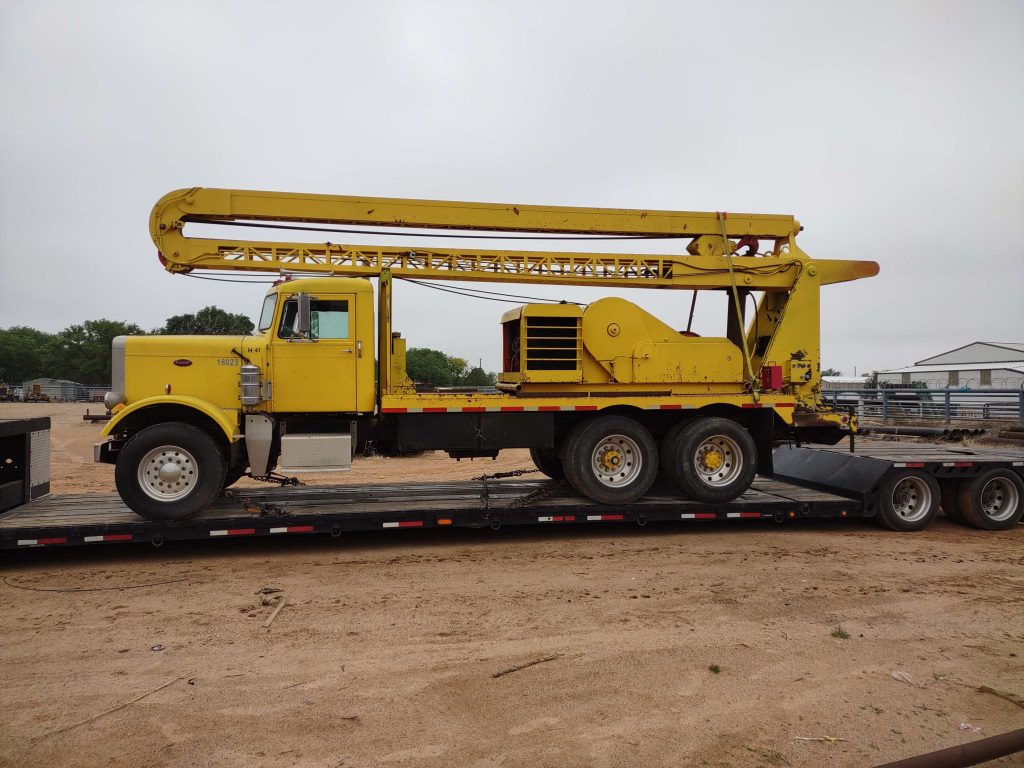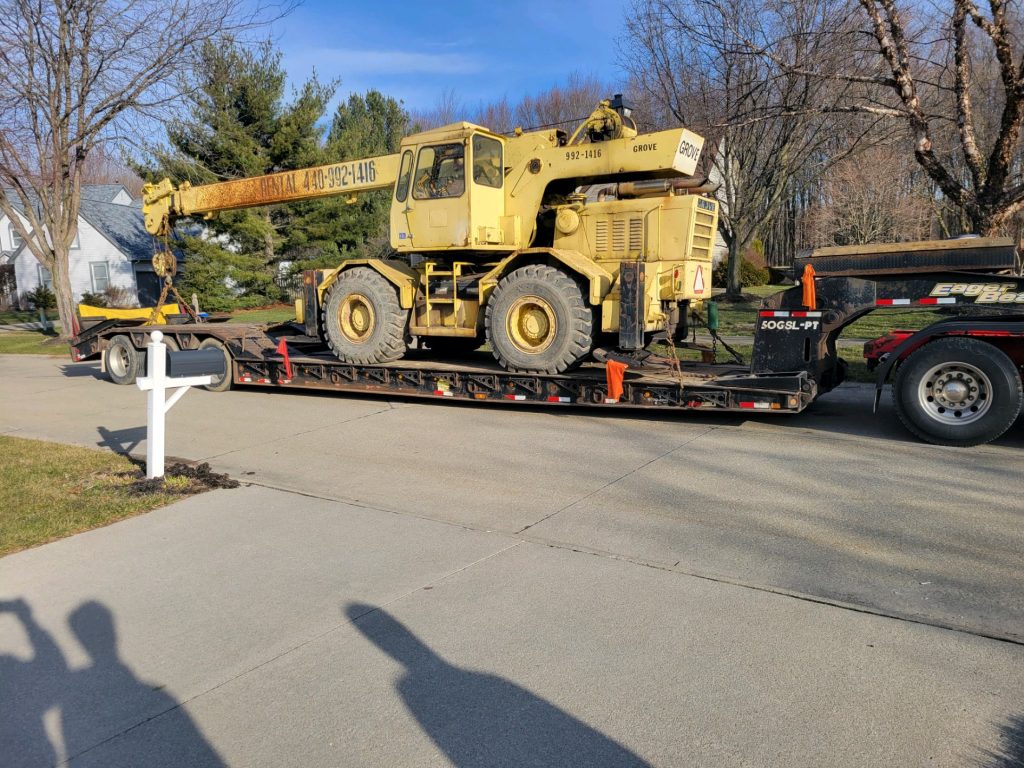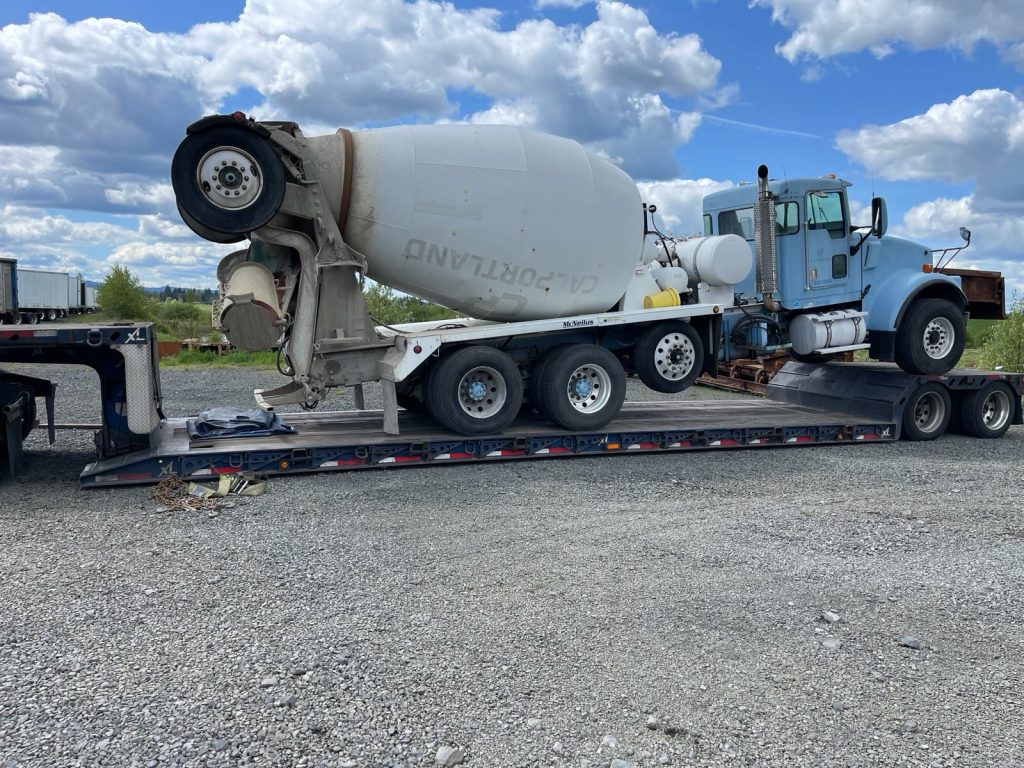What is a Lowboy Trailer? 3 Different Types
Freedom Heavy Haul can offer expedited Pickup and Delivery for any size shipment anywhere in the USA. Contact us today for No Hassle, No Pressure Pricing.
What is a lowboy trailer? A specialized type of flatbed trailer, it is renowned for its unique design which allows it to carry heavy and oversized loads. These trailers are distinguished by their low deck height, making them ideal for transporting tall equipment exceeding legal height limits on standard trailers. Lowboys are essential in industries such as construction, heavy machinery, and manufacturing, where the movement of large equipment is frequent.

Distinguishing Lowboys from Standard Trailers
The primary difference between lowboy trailers and standard trailers lies in their deck height and load capacity. Lowboys have a lower deck, providing a significant advantage in carrying tall items without breaching road height restrictions. This design also offers greater stability and safety, especially when transporting top-heavy equipment.
Varieties of Lowboy Trailers
Lowboy trailers come in several designs, each suited to different types of loads and transportation needs. The versatility in their designs allows them to cater to a wide range of heavy-duty hauling requirements.
Fixed Gooseneck Lowboys (FGL)
Fixed Gooseneck Lowboys are notable for their permanent connection between the trailer and the gooseneck. This design provides ease in loading and unloading equipment, as the gooseneck can be lowered to create a ramp. It’s particularly beneficial for moving vehicles and machinery that can be driven onto the trailer.
Fixed Neck Lowboys
Fixed Neck Lowboys are the most basic type of lowboy trailers. As the name suggests, their neck is fixed and does not detach from the trailer. While this limits the methods of loading to side or rear loading, it offers a sturdy and reliable structure for heavy loads.
Removable Gooseneck Lowboys (RGN)
Removable Gooseneck Lowboys are highly versatile and popular due to their detachable gooseneck. This feature allows the front of the trailer to be lowered to the ground, forming a ramp for easy loading and unloading of equipment. RGN trailers are ideal for heavy and bulky items that are difficult to load from the side.
Specifications and Dimensions of Lowboy Trailers
Lowboy trailers are designed to comply with road regulations while maximizing their load-carrying capabilities. Understanding their specifications and dimensions is crucial for safe and legal transportation of heavy loads.

Maximum Dimensions for Lowboy Trailers
The good length of lowboy trailers typically ranges from 24 to 29.6 feet, while the well height can vary between 18 to 29.6 inches. These dimensions are crucial for ensuring that the cargo fits within the trailer’s capacity and adheres to legal height restrictions.
Legal Limits for Lowboy Trailer Loads
The legal width for these trailers is usually around 8.5 feet, with a maximum legal freight height of approximately 11.5 to 12 feet. The overall load height, including the trailer, must not exceed 14 feet to comply with road safety regulations. Adhering to these limits is essential for safe transportation.
Utilizing Lowboy Trailers
Lowboy trailers are indispensable in scenarios requiring oversized or heavy equipment movement. Their design and capacity make them ideal for specific transportation needs.
Applications and Uses of Lowboy Trailers
These trailers are predominantly used in industries such as construction, where they transport heavy machinery like bulldozers and excavators. They are also used in the military, agricultural, and industrial sectors for moving large equipment.
When to Opt for Lowboy Trailers
Choosing a lowboy trailer is ideal when transporting heavy and tall equipment that would be difficult or illegal to transport on a standard flatbed due to height restrictions.
Special Considerations for Safe Use of Lowboy Trailers
Safety is paramount when using lowboy trailers. Ensuring that the load is properly secured and balanced is crucial. Additionally, drivers must know the height and weight restrictions and possess the necessary skills to maneuver these large trailers.
Comparing Lowboy Trailers
Selecting the right type of lowboy trailer depends on the specific requirements of the load, including size, weight, and ease of loading.

Removable Gooseneck (RGN) vs. Standard Lowboy Trailers
The main difference between RGN and standard lowboy trailers is the detachable neck in RGNs, which offers greater flexibility in loading. However, standard lowboys can be more suitable for certain types of loads due to their sturdy construction.
Factors to Consider When Choosing a Lowboy Trailer
Key factors include the material of the trailer, suspension options, tires, carrying capacity, and whether a hydraulic or mechanical system is more suitable for the intended use.
Loading Techniques, Capacity, and Cost
The loading technique depends on the trailer type. The capacity varies based on the model and design, impacting the overall cost. These aspects should be considered when choosing the most appropriate lowboy trailer for specific needs.
Unique Features of Different Lowboy Trailers
Each type of lowboy trailer offers unique features, such as the ease of loading in RGNs and the stability of fixed-neck lowboys. Understanding these features can help make an informed decision for specific transportation needs.
Advantages and Disadvantages of Lowboy Trailers
Lowboy trailers provide significant benefits in transporting heavy and oversized loads but also have certain limitations that need consideration.
Advantages
The primary advantage is their ability to transport tall and heavy equipment easily. Their low center of gravity also offers increased stability and safety during transportation.
Disadvantages
One disadvantage is the need for special permits for oversized loads. Also, maneuvering these trailers, especially in urban areas, can be challenging due to their size and weight.
Conclusion
Lowboy trailers are vital for transporting heavy and oversized loads across various industries. Their distinct designs and specifications cater to different hauling requirements, making them extremely versatile. Understanding these trailers’ types, capacities, and limitations is crucial for their effective use. Despite certain challenges, the advantages of lowboy trailers in safely and efficiently moving large equipment are undeniable, marking them as an essential component in modern transportation and logistics.







